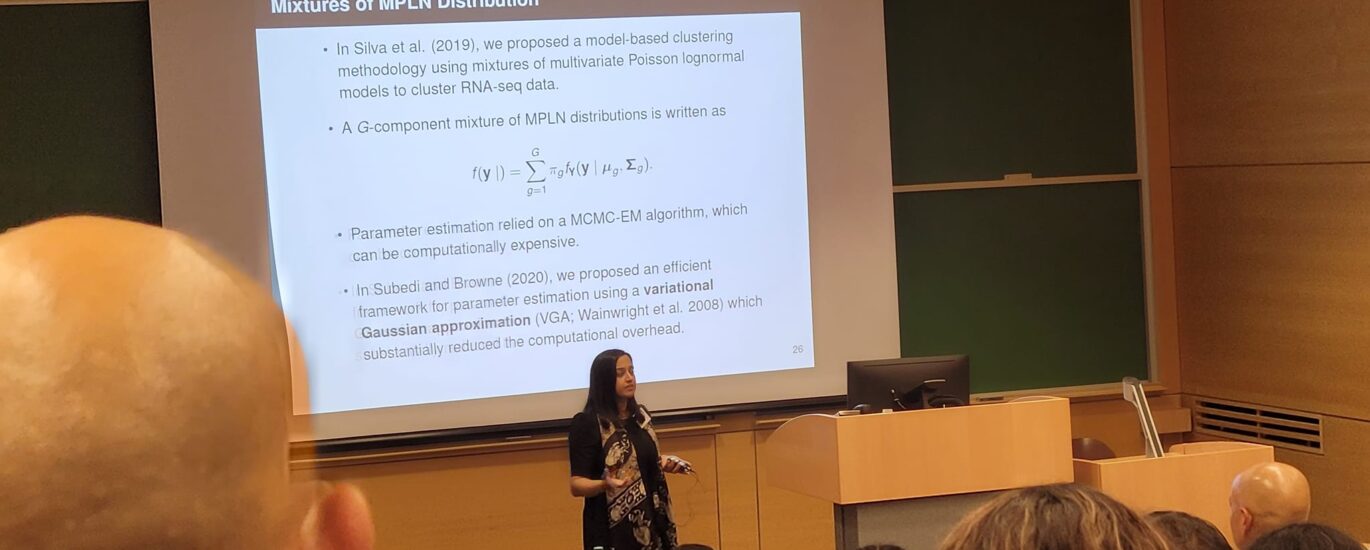Sanjeena Dang (Subedi).
Adverse outcome pathways (AOPs) represent a series of sequential molecular and cellular events that subsequently lead to an adverse health outcome. An AOP begins with a molecular initiating event (MIE) in which an external stressor(s) such as radiation, chemicals, ionizations etc., interacts with a biological target, which is then followed by a set of key events (KEs) that result in an adverse outcome (AO). In recent years, AOPs have been developed for various cancers typically by using a weight-of-evidence approach through literature mining of linkages identified. In a recent collaboration with Health Canada, we developed a framework to incorporate transcriptomics (gene-level) data within an endorsed AOP for lung cancer to gain a better insight into the interconnectivity of these key events at the transcriptomics level. However, most diseases are multidimensional phenomena that involve a complex interaction of genetic, genomic, and environmental risk factors. For this reason, there is a need for a multi-omics AOP framework designed to study the interconnectivity across various biological levels of the organization. An ongoing collaborative effort that focuses on integrating multi-omics data (in our case, transcriptomics, and proteomics data) within the AOP framework will also be presented. This will showcase when shared key events are triggered according to genetic and protein data and how it can help address questions regarding gene-to-protein concordance that results in an adverse effect. Together, these analyses will be informative in deciphering the most relevant early events that link to disease progression using a systems biology approach.
View/Download the presentation from here.
Keywords: AOPs, MIE, Radiation, Multi-omics, Proteomics
Author: Sanjeena Dang



